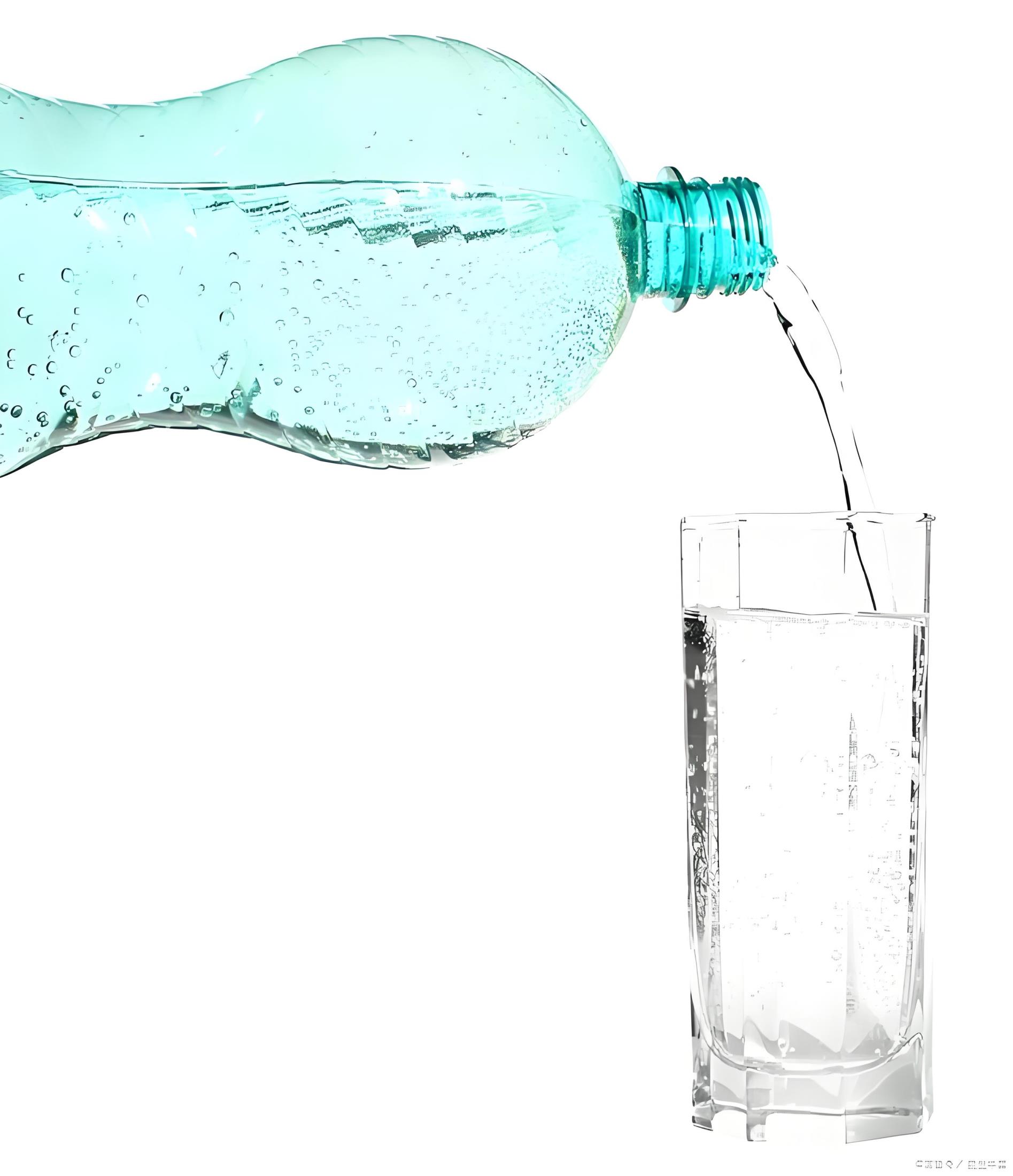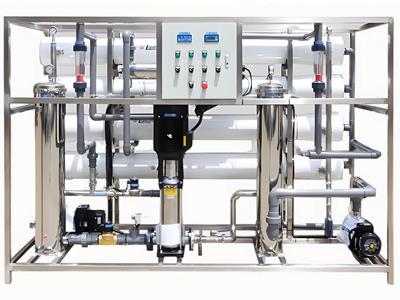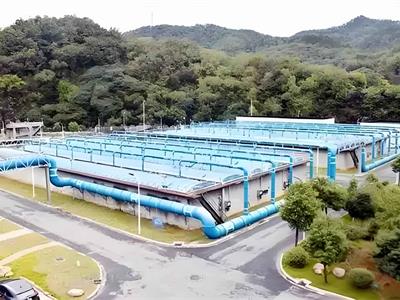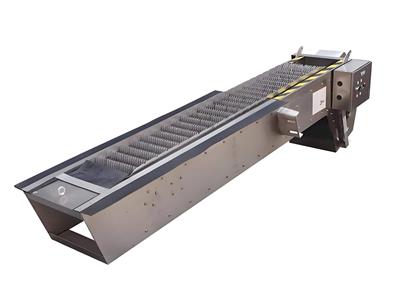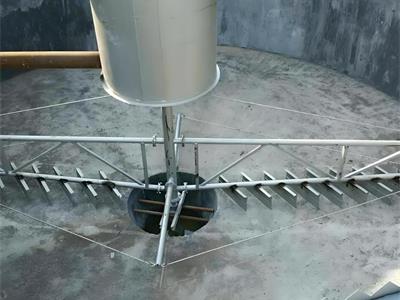- 2025-07-25
Deionized water vs. distilled water: what's the difference?
Water is a resource that is used every day around the world. Have you heard of distilled water and deionized water? Do you know the difference between the two? This article will tell you the difference between distilled water and deionized water.
1. Is deionized water the same as distilled water?
No. Deionized water and distilled water are both indispensable solvents in laboratories, but they differ significantly in terms of manufacturing methods, ingredients, purity, etc. Generally speaking, distilled water has a higher ion content than deionized water. If distilled water is not sterilized by ultraviolet light or treated with a filter membrane, it may contain some microorganisms.
2. What is distilled water?
Have you ever thought about what distilled water is? Distilled water is made by heating water to boiling point, evaporating impurities, and then condensing the resulting vapor into liquid, leaving the pollutants behind. This distillation process can be used to produce drinking water and can also be used for other purposes.
Distilled water is completely free of pollutants and minerals, making it very suitable for medical institutions or people with sensitive skin and allergies. And, because of its high purity, it can be stored for long periods of time, making it safe to use.
Because of its lack of dissolved minerals, distilled water is often used in steam irons and other devices where mineral buildup may be a problem. Since the distillation process removes some of the minerals in the water, it is necessary to add a mineral supplement to produce drinkable and healthy drinking water.
(I) How is distilled water prepared?
During the distillation process, only the purest water molecules and any impurities or contaminants float to the surface of the boiling water in the form of steam. The components removed during the distillation process may include minerals, chemicals, and other contaminants. To ensure the accuracy of research observations, most medical institutions and testing institutions require strict hygiene measures. For this reason, people often use high-purity water, such as distilled water. Distilled water is also commonly used for drinking and cooking because it improves the taste of food and beverages.
The distillation process removes these water components:
Toxic pollutants
Residual waste
Organic and inorganic molecules
Heavy metals and cysts
Harmful bacteria and viruses
(II) Is distilled water safe to drink?
Distilled water is relatively pure and sanitary and can be safely drunk. However, during the distillation process, many minerals needed by the human body will also be lost. Long-term and large-scale drinking of distilled water will damage human health and may cause symptoms such as chest tightness, nausea, diarrhea, physical decline and irritability. Therefore, distilled water is usually used to prepare drugs and chemical reagents, and it is not recommended to be used as daily drinking water.
(III) What can distilled water be used for?
Distilled water has a wide range of uses, and common applications are as follows:
Electronic industry production: Ultrapure water is required in the manufacturing process of semiconductors, circuit boards, integrated circuit chips, etc.
Electric power industry and factory enterprises: Softened water and demineralized water are required for water supply of power generation boilers and medium and low pressure boilers.
Pharmaceutical industry: Used for the manufacture of medical large infusions, medicines, injections, biochemical products pure water, medical sterile water, and pure water for artificial kidney dialysis.
Beverage industry: Used as pure water for blending wine production, beer saccharification, and pure draft beer filtration.
Optical glass and coating process: Use pure water and ultrapure water before cleaning.
Electroplating process and surface treatment: used for deionized water and pure water for cleaning, such as automobiles, home appliances, and building materials.
3. What is deionized water?
There are various opinions about water. You may be more familiar with distilled water and spring water, but what about deionized water? Deionized water is actually water from which all contaminants have been removed, which means that dissolved minerals and salts have also been removed. Deionized water is different from distilled water, which removes all impurities through the distillation process.
Most commercial and manufacturing industries use deionized water to avoid sediment accumulation that affects the life of equipment. In addition, since deionized water is non-conductive, it can be safely used in electrical applications. The following are the standards for deionized water:
| Grade | EW—Ⅰ | EW—Ⅱ | EW—Ⅲ | EW—Ⅳ | EW—Ⅴ |
|---|---|---|---|---|---|
| Item | |||||
| Resistivity MΩ·cm (25°C) | 18 (min. 17) | 15 (at least 12) | 10 (at least 8) | ≥2 | ≥0.5 |
| Particle count >1μm | 1 | 5 | 10 | 100 | 500 |
| Particle count >0.5μm | 100 | 300 | 500 | 1000 | 2000 |
| Bacterial count, max. /mL | 1 | 5 | 10 | 50 | 100 |
| Total organic carbon content, max. | 50 | 100 | 200 | 1000 | 1000 |
| Total silicon dioxide content, max. | 2 | 20 | 50 | 100 | 1000 |
| Chlorine content, max. | 0.5 | 2 | 10 | 100 | 500 |
| Copper content, max. | 0.2 | 2 | 5 | 50 | 500 |
| Potassium content, max. | 0.5 | 5 | 10 | 100 | 1000 |
| Sodium content, max. | 0.5 | 6 | 10 | 200 | 500 |
| Zinc content, max. | 0.2 | 2 | 10 | 100 | 500 |
| Aluminum content, max. | 0.5 | 5 | 10 | 100 | 500 |
| Iron content, max. | 0.5 | 5 | 10 | 100 | 500 |
| Calcium content, max. | 0.5 | 5 | 10 | 100 | 500 |
There are several different ways to remove ions from water, but the most common is the ion exchange process. This process involves exchanging ions in the water with ions in a resin, which removes minerals and salts from the water, ultimately resulting in pure water.
Deionized water has a wide range of uses, some of the most common ones include:
Cleaning electronic devices
Preparing solutions for science experiments
Watering plants
Cleaning windows
Making baby formula
If you are going to use deionized water, there are a few things to consider. First, because deionized water does not contain any minerals or ions, it is very aggressive and corrosive, which means it can damage certain types of materials, so be sure to do your research before using deionized water on any surface. In addition, because it does not contain any impurities, deionized water may be too pure to be suitable for human consumption.
1. How is deionized water prepared?
When water passes through a deionizing resin, minerals and other contaminants, including ionic compounds, are removed. It can also be used to remove salt from seawater or brackish water, making the water suitable for industrial or agricultural use. The charged beads in the resin attract and bind to ions in the water, and once the ions are attached to the beads, they can be extracted from the water through a regeneration process. The beads are regenerated by rinsing them with a deionizing chemical, and then filtering the deionized water to remove any remaining contaminants.
Deionization type:
Ion exchange: tap water -> multi-media filter -> activated carbon filter -> fine filter -> anode bed -> cathode bed -> mixed bed -> post-safety filter -> water intake point.
RO + DI system: tap water -> multi-media filter -> activated carbon filter -> fine filter -> reverse osmosis equipment -> mixed bed -> water tank -> post-safety filter -> water use point.
RO + EDI system: tap water -> multi-media filter -> activated carbon filter -> fine filter -> reverse osmosis equipment -> electrodeionization (EDI) -> water tank -> post-safety filter -> water use point.
(I) What is an EDI system?
Electrodialysis uses electric current to separate ions from water, while ion exchange uses chemical reactions to exchange ions between water and ion exchange resins. Both methods are effective in removing dissolved ions from water, but each has its own advantages and disadvantages.
Electrodialysis is often used to remove ions from large quantities of water (such as seawater or brackish water). This method is very effective in removing dissolved ions, but it is expensive and energy-intensive. Ion exchange is often used to remove ions from small quantities of water (such as drinking water). This method is cheaper and uses less energy than electrodialysis, but it is not as effective in removing dissolved ions.
Deionization can be used to purify both fresh and salt water. This process is essential for producing safe drinking water and has many other applications in industry and agriculture. Deionization can be used to remove minerals from boiler feed water, produce ultrapure water for electronics manufacturing, and purify agricultural water. The process is also used in seawater desalination, which is the conversion of salt water into fresh water.
(II) Can deionized water be drunk?
Deionized water is relatively pure and can be drunk directly. However, it lacks nutrients and long-term drinking can cause the body to lose inorganic salts because the deionization process also removes mineral ions that are beneficial to the human body, such as magnesium, sodium, and calcium. Deionized water is also prone to bacterial growth after storage.
(III) What can deionized water be used for?
Deionized water is of high purity and does not contain harmful substances. It can be used in the production processes of the pharmaceutical, electronic, cosmetic and other industries to ensure product quality and safety.
In addition, deionized water is also commonly used for water treatment of cooling systems, boilers and other equipment. Using pure deionized water can effectively prevent scaling and corrosion, extend the service life of equipment, and improve work efficiency.
Other common applications are:
Treat seawater, salt water, etc. to produce high-quality water supply and drinking water.
Public facilities and real estate industries: supply high-quality water network systems and swimming pool circulating water treatment systems.
Chemical industry: treat pure water required for production processes.
Textile printing and dyeing industry: treat pure water to remove hardness and salt.
IV. Deionized water and distilled water: Do you know the difference?
Deionized water uses ion exchange resins to remove a large number of anions and cations in water, but it cannot remove all ions. Distilled water is formed by condensation of steam when it is cooled, so it basically does not contain any ions (except hydrogen ions and hydroxide ions).
Distilled water is purer than deionized water, so it has a lower conductivity. Distilled water is generally used for analysis, while deionized water is used in factory production.
Comparison between distilled water and deionized water
Distilled water undergoes a "distillation" process to remove common impurities; while deionized water undergoes a "desalting" process to produce water without ions.
Deionized water is less pure than distilled water, and distilled water is ultra-pure.
Distilled water is boiled to a specific temperature and then condensed; deionized water mainly uses ion exchange resins to remove ions from the water.
Distilled water is considered safe to drink, but the mineral components are removed; deionized water cannot eliminate uncharged particles and molecules in the water in this way.
5. Advantages of deionized water and distilled water
(I)Deionized water
Deionized water is pure water obtained by removing mineral ions from water. The deionization process uses ion exchange resins to remove positive and negative ions from water, making it suitable for a variety of application scenarios. In the medical industry, deionized water helps to achieve successful and accurate results.
Common advantages of deionized water are as follows:
High Purity: Due to the purity of deionized water, it has become the first choice for many industries because it can eliminate common water impurities and avoid problems such as sediment accumulation, equipment corrosion, and food and beverage contamination.
Avoids Corrosion: Minerals in water can corrode metal machines and equipment, while deionized water is purified and does not contain any impurities.
No Visible Sediment: Deionized water helps remove minerals that may cause visible residues on equipment and metal surfaces, thereby extending the service life of equipment and metal surfaces.
Easy to Generate: Deionization is a more convenient and quicker way to produce distilled water than other water treatment methods.
(II) Distilled Water
Distilled water successfully removes impurities such as heavy metals, minerals, and organic and inorganic compounds through a boiling and evaporation process. In most places where treated water is not available (usually near the sea), distillation is used to obtain drinkable water from seawater.
Common advantages of distilled water are as follows:
Cleans the Body: Water is an important part of our body and is beneficial for cleansing the body system. Drinking distilled water is good because it does not contain harmful chemicals.
Prevents disease: Pathogens in water are removed during the distillation process, making distilled water safe to drink and use.
Removes harmful chemicals: Distilled water is expected to eliminate all harmful chemicals, so it is proven safe for use in residential and commercial settings.
VI. Conclusion
From this article, we can see that both methods can effectively remove contaminants from water supplies. Deionized water does not undergo a more thorough purification process than distilled water, so there are fewer dissolved minerals in distilled water. Deionized water is prepared by passing pressurized tap water or well water through ion exchange resins, which remove all ions (positively and negatively charged particles).
Based on your needs, we can recommend the most suitable equipment for you and provide professional distilled water purifiers, deionization systems, and electrodeionization system customization services. With the help of our experienced engineering team, your business will have easier access to deionized and distilled water.

